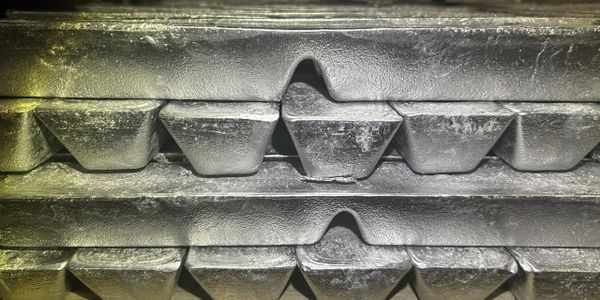
Metals shape our tools, machines, and everyday useful items. Some metals are soft, some are strong, and some are rare. Engineers often mix two or more metals to create something better. These combinations are known as alloys, and they are everywhere. You can find alloys in cars, buildings, plumbing, and electronics. They give us strength, resistance, and lasting performance in many forms. Scientists mix metals to improve their performance in real conditions. With the right formula, an alloy becomes powerful, light, or long-lasting. This post explores one such important mix of two specific metals. These metals change properties when joined together under controlled heat. The final alloy performs tasks that neither pure metal could do alone. This creates smart solutions in mechanical, electrical, and industrial projects.
Understanding Alloys and Why They Matter
An alloy is a mixture of two or more different metals. Mixing changes how the original metals act or respond. Engineers do this to make stronger or more useful materials. For example, steel is an alloy made from iron and carbon. It’s stronger and more flexible than pure iron by itself. Another common alloy is bronze, made from copper and tin. Each alloy has its own job in machines, tools, or parts. The goal is to create a metal that fits special needs. This makes life easier, safer, and often more affordable.
What Happens When Lead and Copper Combine?
Lead is soft, dense, and resistant to corrosion or chemicals. Copper is strong, flexible, and an excellent conductor of heat. When combined, they create a unique material with new qualities. The alloy of lead and copper has been used for centuries. It blends the softness of lead with the durability of copper. This alloy resists wear and still shapes easily when needed. It does not rust easily and survives extreme conditions. These traits make it perfect for specific technical applications today.
Key Properties of This Unique Metal Blend
Mixing copper and lead creates a very interesting material. The exact results depend on the mix of the two metals. The alloy of lead and copper is dense and durable. It can resist moisture, heat, friction, and chemical damage. This makes it ideal for parts that must handle pressure. It also stays stable in both hot and cold environments. Despite its toughness, this alloy can still be shaped. That makes it easy to form into rods, tubes, or fittings. Engineers love it for how well it balances flexibility and strength.
Common Industrial Uses of Copper-Lead Alloys
Bearings and Bushings
The alloy of lead and copper is widely used in bearings. These parts help moving pieces slide smoothly inside engines or machines. This alloy handles friction and heat without wearing out fast.Pipes and Fittings
Plumbing systems often rely on metal parts that resist damage. This special alloy offers lasting strength in both water and gas lines.Electrical Terminals
This alloy conducts electricity well and resists corrosion too. That makes it perfect for electrical connectors or grounding systems.Ammunition and Ballistics
The alloy of lead and copper is ideal for bullet jackets. It provides the needed weight while resisting deformation during impact.Machinery Components
Gears and industrial parts need toughness and stability. This alloy supports heavy-duty operations without frequent breakdowns.
Benefits That Come with the Combination
Corrosion Resistance
The alloy lasts longer because it resists rust and decay. This means fewer replacements and lower maintenance costs.Thermal and Electrical Conductivity
Copper keeps the alloy good for heat and electricity transfer. That’s helpful in electronics and heating systems.Formability and Machinability
Even with lead’s softness, the alloy holds its shape well. Manufacturers can cut, mold, or roll it without difficulty.Cost-Effectiveness
This material is more affordable than rare or pure metals. Its long lifespan also saves money in the long term.Versatile Applications
Because of its blend of properties, this alloy fits many industries. It’s used in manufacturing, automotive, plumbing, and defense sectors.
Working with Alloys: Things to Consider
Every alloy must be handled with proper knowledge and care. Lead is toxic, so safety guidelines must always be followed. Workers use gloves, goggles, and good ventilation when melting it. Disposal of waste must follow local laws to protect the environment. Recycling of metal scraps helps reduce waste and save resources. The alloy of lead and copper is no exception to this. Despite its benefits, health safety must always come first. Professionals test these alloys before using them in public or private projects. This ensures each part works well and lasts over time.
How Scientists Keep Improving Alloys
Testing New Ratios
Scientists mix different percentages of copper and lead. Each blend offers new results in strength or flexibility.Advanced Cooling Techniques
Cooling the molten mix in special ways changes its hardness. This makes it stronger or more adaptable.Adding Other Elements
Small amounts of other metals can improve performance. Tin or antimony, for example, increase durability or reduces friction.Analyzing Stress and Wear
Engineers test how the alloy reacts under pressure or motion. These tests help decide where the alloy works best.
The Role of Alloys in Sustainable Design
Modern industries need materials that last longer and waste less. The alloy of lead and copper supports green building and design efforts. Its ability to survive harsh use means fewer replacements. That saves energy, materials, and time over years of operation. Recyclability adds another benefit, supporting eco-friendly production models. As technology evolves, so do the ways this alloy gets used. With responsible manufacturing, this alloy helps balance progress and protection.
Conclusion: Strength in Every Blend
Metal combinations are more than just mixtures—they are solutions. By blending the best traits of different elements, engineers solve real problems. The alloy of lead and copper is one of those solutions. Its strength, formability, and resistance make it valuable worldwide. It powers machines, protects homes, and supports new inventions daily. Understanding these materials helps everyone appreciate how things are made. As demand grows, this alloy will remain important across industries. The more we learn, the better we design for the future.


Write a comment ...